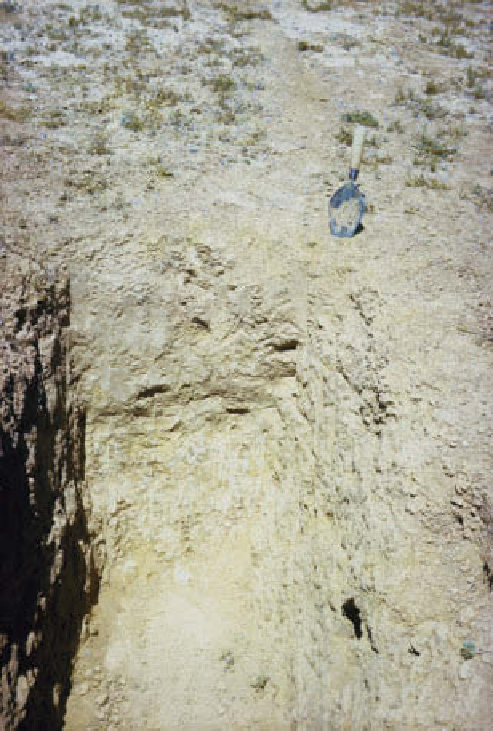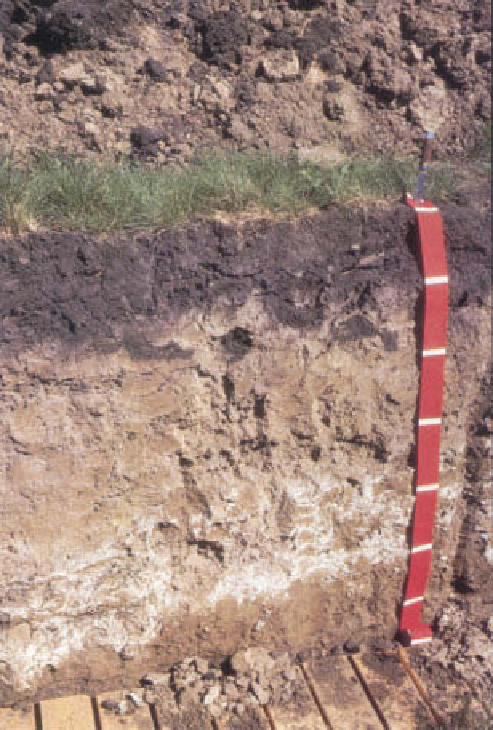Geoscience Reference
In-Depth Information
the prairie of Alberta, Canada. This is perhaps the most fertile
soil in the world, with thick humus (Ah) overlying weathered
(Bkw) and calcic (Bk) horizons. Lime deposition is prominent in
the B and C horizons, as is the water table at the base. Scale
in feet.
Photo: Ken Atkinson
out and has a horizon of gypsum in the lower half of the soil
pit. The sequence is Ak-Bky-Cky (FAO: Ochric Gypsisol).
'Ochric' denotes the pale A horizon, common in deserts due
to the lack of vegetation to input organic matter.
Photo: Ken Atkinson
Podzolization process
subarctic and temperate climates. The critical component
is the acid organic layer or
mor
on the soil surface which
decomposes only slowly and only partially, releasing
organic fulvic acids and reactive organic chemicals called
hydroquinones which have the ability to form complexes
with the iron and aluminium chemicals released by the
intense weathering of soil minerals. As a complex or
chelate
relatively immobile iron and aluminium migrate
freely downwards in percolating water. These sesquioxides
are deposited in the B horizon together with any humic
colloids that are being translocated as well. The resulting
soil is strongly acid at the surface (pH 3·0), with a bleached
subsurface horizon (Ea) above B horizons where humus,
iron and aluminium have been precipitated. As one might
Podzols were first named by peasants in the Russian boreal
coniferous forest or
taiga
who noticed a distinct white
horizon below the surface litter and at depth a black layer.
Believing the black layer to be charcoal from past forest
fires, they called the white layer
podzol
or literally 'ash soil'.
This is not, of course, the way in which the soils are
formed, but it describes well the pale surface horizon of
eluviation
(out-washing) overlying the blackish or orange
horizon of
illuviation
(in-washing) (
Plate 18.9
).
Podzols
are the result of extreme leaching at the surface and
translocation of sesquioxides into the subsoil. These
processes occur typically under coniferous woodland,
mixed forest vegetation and acid heath, especially in











































